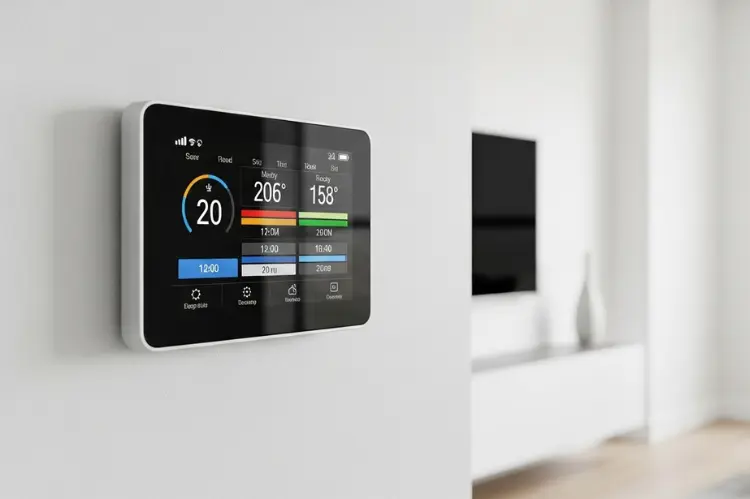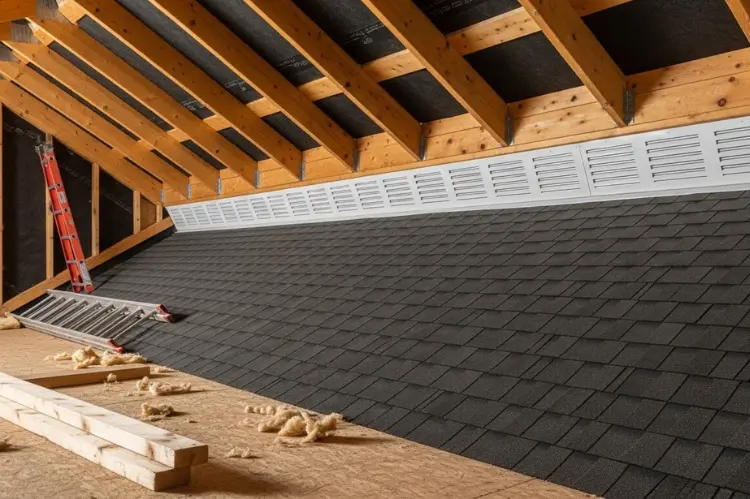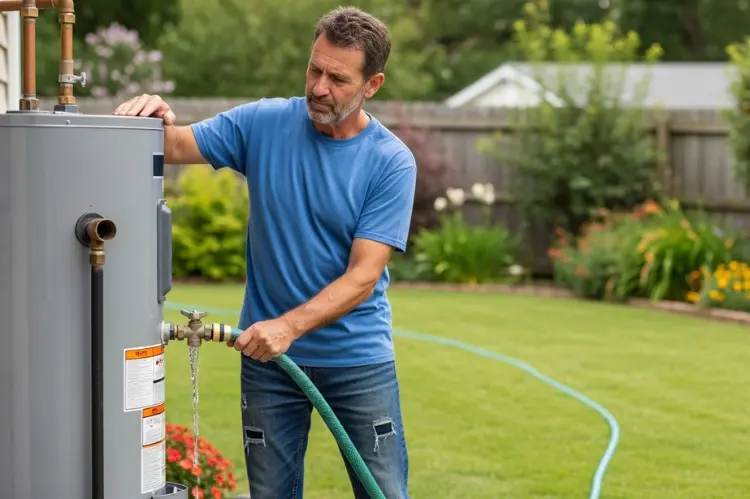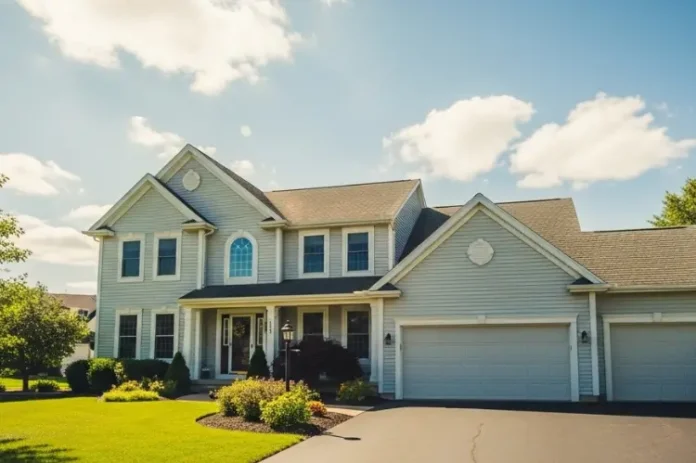Last summer, the heat stuck around far longer than anyone planned. The U.S. Environmental Protection Agency notes that the average heatwave season in large U.S. cities now lasts about 46 days longer than it did in the 1960s.
Those extra weeks push air-conditioning systems, raise power bills, and turn poorly sealed rooms into ovens. Many families in Meridian, ID, felt that squeeze when triple-digit days dragged deep into September. If you want to stay cool and spend less, now is the moment to prepare.
The steps that follow show where to focus first. Each one is simple, direct, and delivers quick gains for comfort and cost.
Stop Air Leaks Fast

Every crack around a door or window lets hot outside air replace the cool air you paid to make. Start with a lit incense stick on a windy evening. Move it around frames and watch the smoke bend. Where it flickers inward, you have a leak.
Peel-and-stick foam tape seals most door jambs in minutes. Clear silicone caulk fills gaps where siding meets frames. Don’t forget the ductwork that runs through the attic. Metal tape—not cloth “duct tape”—closes loose joints and prevents cooled air from escaping before it reaches the rooms that need it. A Saturday spent sealing can lower peak-hour runtimes and keep every room at the same temperature.
Book an Expert AC Tune-Up

Even a well-sealed home will overheat if the cooling unit runs dirty or low on refrigerant. Call professionals who offer air conditioning services in Meridian, ID for a pre-season tune-up. A technician can clean the outdoor coil, tighten electrical connections, and check the fan speed.
Clean coils move heat out faster; correct charge prevents ice on the indoor coil and stops energy waste. Ask for a new pleated filter and set a reminder to swap it every 60 days once the heat arrives. A single visit can boost efficiency by up to fifteen percent and extend system life by years.
Let a Smart Thermostat Think for You

Modern thermostats learn your routine and trim cooling when no one is home. Install takes about ten minutes on most low-voltage systems: two screws, four wires, and a Wi-Fi login. Set high but safe limits—78°F when the house is empty, 74°F when people return—and let the schedule run.
Geofencing nudges the unit on as you drive back from work, so rooms feel comfortable before you walk in. Many utilities now offer rebates that cover most of the device cost, and monthly app reports show how small tweaks translate into real savings.
Block the Sun at the Window
Glass can add as much unwanted heat as a small space heater. Start with the panes that face west and south, since they take the worst afternoon sun. The reflective film sticks to the inside surface and bounces away up to seventy percent of solar gain while still letting you see out.
If film feels too permanent, choose thermal curtains with light-colored backing; close them before lunch, and rooms stay cooler well into the evening. Honeycomb shades work too. Their air pockets slow heat flow yet fold tight when daylight matters. Combine any shade with an exterior awning or a slim pergola, and wall temperatures drop even further.
Make Sure Your Attic Can Breathe

Attics trap a lot of heat, especially during long, hot days. Without good airflow, the temperature up there can soar above 130°F, which pushes heat back into your rooms. Start by checking for basic ventilation. Ridge vents along the roof and soffit vents under the eaves allow air to move through the space.
If those vents are blocked by insulation or dust, clean them up. You can also add a solar-powered attic fan to help push the hot air out. These fans work all day without raising your electric bill. A cooler attic takes the pressure off your cooling system and keeps upstairs rooms more comfortable.
Add Shade Where You Can

Direct sunlight makes your home hotter than it needs to be. If your windows or walls sit in full sun for hours, the indoor temperature will rise no matter how good your insulation is. Adding shade outside can make a big difference.
Plant fast-growing shrubs or trees near sunny sides of the house. Install fabric awnings over windows and doors. Build a pergola or covered patio where heat builds up in the afternoons. Even a simple shade sail can lower surface temperatures by several degrees. All of these changes also protect the siding and extend the life of exterior paint.
Flush and Check Your Water Heater

High temperatures often push your water heater harder than usual. If it’s set too hot or clogged with sediment, it may overheat or stop working when you need it most. Turn off the power or gas before draining a few gallons from the tank. If the water comes out rusty or full of grit, flush the whole thing.
Most tanks have a drain at the bottom that connects to a garden hose. After flushing, check the pressure relief valve and lower the thermostat to 120°F. That setting is hot enough for comfort but safe enough for kids and energy savings.
Build a Simple Emergency Kit

When the power goes out during a heatwave, you need to act fast. A small kit can make a big difference. Start with a few gallons of drinking water for each person in your home. Add battery-powered fans, ice packs, and cooling towels.
Include flashlights, spare batteries, and a phone charger with a power bank. If you live with anyone sensitive to heat—like seniors or infants—keep their needs in mind. Pack snacks that don’t need cooking and store the kit somewhere easy to grab. Being ready cuts stress and helps you respond with calm if the grid fails.
Talk Through a Family Safety Plan

A written plan keeps everyone on the same page. Choose a few cool rooms in your home where people can gather during extreme heat. Make sure everyone knows where to find the emergency kit. Set hydration reminders and plan regular cool-down breaks during outdoor chores.
If you have pets, keep a spot for them in your shaded area. Discuss where to go if your home becomes unsafe—whether it’s a friend’s house, a local cooling center, or a community shelter. Go over the plan with everyone in the household and update it at the start of each summer.
A heatwave doesn’t have to catch you off guard. With a few smart changes, your home can stay cooler, safer, and more efficient. Insulation, sealing, and good ventilation work together to hold the heat back.
A well-maintained AC system, smart thermostat, and good window coverings keep your home comfortable during the hottest days. Exterior shade and emergency planning add peace of mind. These steps are easy to do before the worst of the heat arrives. They also help you avoid high energy bills and last-minute repairs. A little prep now can make all the difference when the next heatwave hits.
Read Next: How to Handle an HVAC Breakdown Without Losing Your Cool

